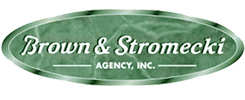In preparing for the possibility of mental incapacity, people who create a revocable living trust are not done with their estate planning after they sign the trust. After the agreement is signed, it is necessary to fund it with assets.
There are several types of assets that can be included in a revocable living trust. The following is not an exhaustive list, but it does include the most common assets people put into their trust.
Cash accounts
These are accounts such as savings, checking and money market accounts. Be advised that banks may consider the use of a CD in a revocable living trust as a withdrawal, so this may mean the CD will have to mature before it is retitled into a trust.
Non-qualified annuities
These types of annuities can be retitled to the trust, and the trust can be listed as the primary beneficiary. It can also be listed as a second beneficiary.
Real estate property
If you own real estate — like land or a house — you may want to consider placing your property into a trust.
To transfer your home or other real estate to a living trust, you’ll generally have to prepare, sign, and register a new deed for the property. Your mortgage lender may require you to fill out additional paperwork to make sure your payments aren’t interrupted.
Brokerage and investment accounts
Any assets that are held in brokerage or investment accounts in the trust creator’s name, as a joint name or as a tenant in common will qualify.
Qualified annuities, 401(k), IRA and 403(b) plans are not included. Transferring such accounts would bring tax penalties.
Certificate stocks and bonds
To avoid having to return original certificates and paying for insurance on the fair market value, simply deposit the certificates into a brokerage account. Make sure they are titled in the revocable living trust’s name.
Business interests
Shares of stock, membership interests for LLCs and partnership interests are included in this category.
Read any operating agreements, partnership agreements, shareholders’ agreements or other restrictions to ensure proper protocols are followed for retitling products into the name of a revocable living trust.
Tangible property
Any personal effects qualify for this category. Books, clothing, jewelry, electronics, vehicles, firearms and even live pets qualify. In some states, vehicles that are in a person’s name may be transferable without probate.
Life insurance
Changing the life insurance policy’s owner title to be the trustee of the revocable living trust may be beneficial. If a policyholder becomes incapacitated, the disability trustee will have the power to deal with the policy and borrow against it.
In states where creditor protection is offered for the cash value of life coverage, it is important to be careful. Some states have laws in place to only protect an individual resident’s policy, which means a trust will obviously not qualify as an individual resident. When residing in such a state, be sure the POA form provides the attorney in fact permission to handle life insurance.
Other assets
Some additional assets that may be included are copyrights, trademarks, patents and royalties. Any money owed to the creator through loans can also be included. Mineral, gas and oil rights may qualify, but owners should check the type of ownership they have to see if a new deed or an assignment is required.
Although a new deed must be recorded, real estate can be transferred into a revocable living trust.
